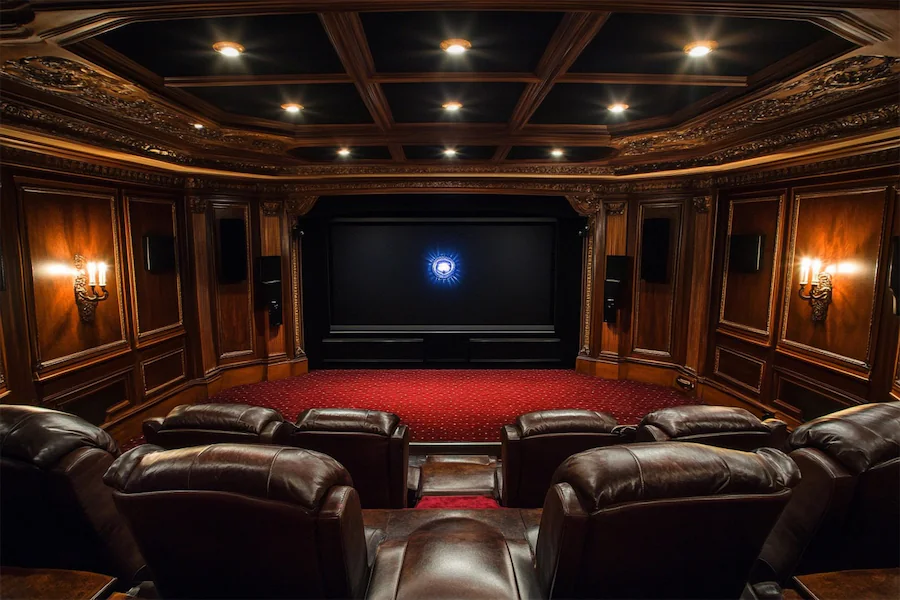Designing an Edwardian entertainment room involves recreating the elegance and charm of the early 20th century, characterized by a transition from the ornate Victorian style to a lighter, more refined aesthetic. Here’s a comprehensive guide to achieving this timeless design:
Introduction to Edwardian Entertainment Rooms
The Edwardian era (1901-1910) marked a shift towards simplicity and comfort in interior design. Entertainment rooms of this period, often referred to as drawing rooms, served as spaces for social gatherings, music, and leisure activities. The design emphasized lightness, with a preference for airy spaces, pastel color schemes, and elegant furnishings.
History and Origins of Edwardian Style
Following the Victorian era’s heavy and elaborate decor, the Edwardian period embraced a more restrained and graceful approach. Influenced by Art Nouveau and the Arts and Crafts movement, this style favored natural motifs, quality craftsmanship, and a harmonious blend of form and function.
Key Features of Edwardian Entertainment Rooms
- Color Palette: Utilize soft, pastel shades such as pale blues, greens, and creams to create a serene and inviting atmosphere. These colors enhance natural light and contribute to the room’s airy feel.
- Furniture: Incorporate elegant, well-crafted pieces with lighter woods like oak or walnut. Upholstered chairs and sofas with delicate patterns, along with occasional tables, reflect the period’s emphasis on comfort and style.
- Flooring: Opt for polished wooden floors adorned with Persian or oriental rugs to add warmth and texture, a hallmark of Edwardian interiors.
- Lighting: Feature chandeliers and wall sconces with intricate detailing to provide soft, ambient lighting, enhancing the room’s elegant ambiance.
- Decorative Elements: Incorporate floral motifs, decorative plasterwork, and stained glass to add character and authenticity to the space. These details reflect the era’s appreciation for artistry and craftsmanship.
Applications of Edwardian Style in Entertainment Rooms
- Seating Arrangements: Arrange seating to facilitate conversation, with sofas and armchairs placed around a central coffee table. This setup reflects the social nature of Edwardian entertainment rooms.
- Entertainment Centers: While modern entertainment systems were absent during the Edwardian era, integrating technology discreetly can maintain the room’s historical integrity. Consider cabinetry that conceals modern devices when not in use.
- Wall Treatments: Adorn walls with wainscoting or picture rails, and consider using wallpaper with subtle floral patterns to add depth and interest. These treatments contribute to the room’s period charm.
- Accessories: Display period-appropriate accessories such as porcelain vases, framed artworks, and decorative clocks to enhance the room’s authenticity. These items add a personal touch and reflect the era’s aesthetic preferences.
Considerations When Designing an Edwardian Entertainment Room
- Authenticity vs. Modern Comfort: Strive to balance historical accuracy with contemporary comfort, ensuring the room is both functional and true to the Edwardian aesthetic.
- Natural Light: Maximize natural light through the use of large windows and light-colored drapery, a key aspect of Edwardian design that enhances the room’s airy feel.
- Quality Materials: Invest in high-quality materials and craftsmanship to reflect the Edwardian emphasis on durability and elegance. This approach ensures the room’s design remains timeless and refined.
Conclusion
An Edwardian entertainment room exudes timeless elegance and sophistication, offering a serene space for socializing and relaxation. By focusing on period-specific colors, furnishings, and decorative elements, you can create a room that honors the charm of the early 20th century while accommodating modern needs.
